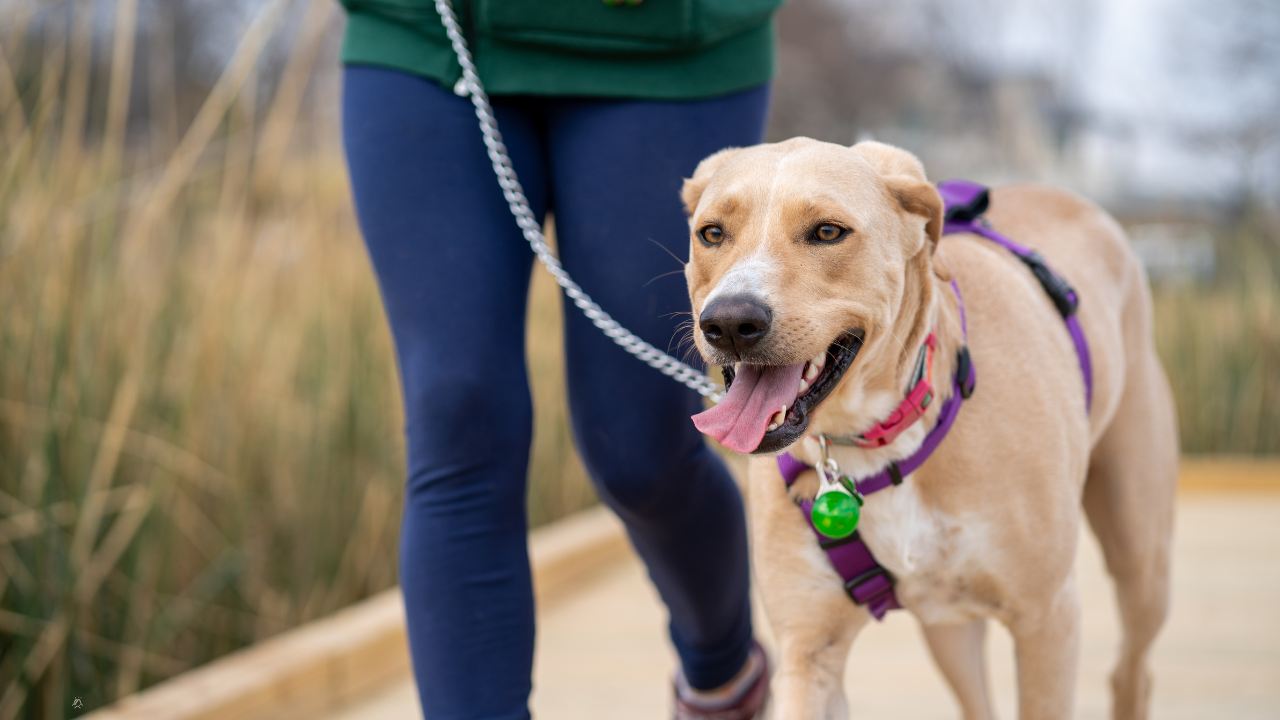Supporting & Managing Your Dog's Reactivity: Be Your Dog's Lifeguard
Mar 19, 2025
Supporting & Managing Your Dog’s Reactivity: Be Your Dog’s Lifeguard
Dog reactivity can feel overwhelming, but the key to helping your dog stay calm is understanding their stress levels and guiding them through triggers safely. Think of yourself as your dog’s lifeguard—watching for signs of distress, providing support, and preventing them from getting overwhelmed by their emotions.
In this blog post, we will cover:
- What it means to be your dog’s lifeguard
- How to help them recover after a stressful event
- A simple treat scatter exercise to promote calmness
Why Reactivity Feels Like Drowning
Imagine being at the beach. If the water is rough with strong currents, lifeguards will not let you swim. Instead, they let you explore the shore, dip your toes in, and keep you safe from danger.
Your dog’s reactivity works the same way.
When they encounter a trigger—such as another dog, a stranger, or a loud noise—their stress levels rise. If they remain on the “shore” (aware but not overly focused), they can stay regulated. But if they step too far into the “water” (fixating or reacting), they need help returning to safety.
Your job is to be their lifeguard by keeping them in a manageable zone where they can observe without feeling overwhelmed.
How to Practice Lifeguard Training
The best place to work on this skill is in a large open space, such as a park, rather than a busy neighborhood where unpredictable triggers pop up too quickly.
Lifeguard Training Rules
- If your dog chooses to move away from a trigger, let them.
- If your dog moves toward a trigger, slow them down and give them time to process. Keep the leash loose to prevent tension from adding stress.
- When your dog disengages from the trigger, praise them and allow them to keep moving. If they re-fixate, calmly increase distance.
By exposing your dog to triggers from a safe distance, they learn that they are not trapped or threatened—helping them build confidence instead of fear.
Helping Your Dog Recover After Reactivity
Just as you would not expect someone to instantly calm down after a near-drowning experience, your dog also needs time to regulate after a stressful event.
One of the best ways to help them decompress is through a treat scatter exercise. This simple but powerful tool encourages sniffing, lowers stress hormones, and activates their nervous system’s relaxation response.
How to Teach the Treat Scatter Exercise
Practicing this exercise in calm environments first will help your dog learn how to use it when stressed.
- Find a quiet space and grab a handful of high-value treats.
- Say “Find it!” and drop the treats near your dog’s nose.
- As they sniff and eat, keep adding treats one at a time near where they are sniffing.
- Continue for at least 45 seconds—this extended sniffing period helps reset their nervous system.
- Once your dog understands the game, practice in different locations.
Using the Treat Scatter After a Reactive Episode
After your dog reacts to a trigger:
- First, increase distance until they stop fixating.
- If they are still tense, wait—sniffing will not work if they are still in fight-or-flight mode.
- Once they seem calmer, start a treat scatter to help them fully decompress.
Building Long-Term Resilience
Reactivity is not just about training behaviors—it is about helping your dog’s nervous system recover so they can handle stress more effectively in the future.
Other decompression activities include:
- Allowing them to sniff on walks instead of rushing
- Providing long-lasting chews or food-stuffed toys
- Using lick mats or frozen treats to encourage calm behavior
If your dog struggles with reactivity, supporting their recovery is just as important as preventing stressful encounters.
Final Thoughts
Helping a reactive dog takes patience, distance, and trust. By acting as their lifeguard, you can keep them in a manageable state, help them recover faster, and set them up for long-term success.
Want more personalized guidance for managing reactivity? Book a free discovery call with me today!
Feeling overwhelmed with your pup? We're here to help!
You don't have to do it all alone.
Join our mailing list to receive the latest training tips, resources, and updates from Ashley!
We hate SPAM. We will never sell your information, for any reason.

